Gender and the American Presidency
Lexington Studies in Political Communication
Series Editor: Robert E. Denton, Jr.
Virginia Polytechnic Institute and State University
This series encourages focused work examining the role and function of com-munication in the realm of politics including campaigns and elections, media, and political institutions.
RECENT TITLES IN THE SERIES:
Seen and Heard: The Women of Television News , By Nichola D. Gutgold
Nuclear Legacies: Communication, Controversy, and the U.S. Nuclear Weapons Complex , Edited by Bryan C. Taylor, William J. Kinsella, Stephen P. Depoe, Maribeth S. Metzler
Conditional Press Influence in Politics , By Adam J. Schiffer
Telling Political Lives: The Rhetorical Autobiographies of Women Leaders in the United States , Edited by Brenda DeVore Marshall and Molly A. Mayhead
Media Bias? A Comparative Study of Time, Newsweek, the National Review, and the Progressive, 19752000 , By Tawnya J. Adkins Covert and Philo C. Wasburn
Navigating the PostCold War World: President Clintons Foreign Policy Rhetoric , By Jason A. Edwards
The Rhetoric of Pope John Paul II , Edited by Joseph R. Blaney and Joseph P. Zompetti
Stagecraft and Statecraft: Advance and Media Events in Political Communication , By Dan Schill
Rhetorical Criticism: Perspectives in Action , Edited by Jim A. Kuypers
Almost Madam President: Why Hillary Clinton Won in 2008 , By Nichola D. Gutgold
Cracked But Not Shattered: Hillary Rodham Clintons Unsuccessful Run for the Presidency , Edited by Theodore F. Sheckels
Gender and Political Communication in America: Rhetoric, Representation, and Display , Edited by Janis L. Edwards
Communicator-in-Chief: How Barack Obama Used New Media Technology to Win the White House , Edited by John Allen Hendricks and Robert E. Denton, Jr.
Centrist Rhetoric: The Production of Political Transcendence in the Clinton Presidency, By Antonio de Velasco
Studies of Identity in the 2008 Presidential Campaign , Edited by Robert E. Denton, Jr.
Campaign Finance Reform: The Political Shell Game, By Melissa M. Smith, Glenda C. Williams, Larry Powell, and Gary A. Copeland
Us against Them: The Political Culture of Talk Radio , By Randy Bobbitt
Internet Policy in China: A Field Study of Internet Cafs , By Helen Sun
A Communication Universe: Manifestations of Meaning, Stagings of Significance , By Igor E. Klyukanov
The Perfect Response: Studies of the Rhetorical Personality, By Gary C. Woodward
Presidential Campaign Rhetoric in an Age of Confessional Politics , By Brian T. Kaylor
Manipulating Images: World War II Mobilization of Women through Magazine Advertising, By Tawnya J. Adkins Covert
The Politics of Style and the Style of Politics , Edited by Barry Brummett
Communication Realities in a Post-Racial Society: What the U.S. Public Really Thinks about Barack Obama , By Mark P. Orbe
Politics and the Twitter Revolution: How Tweets Influence the Relationship between Political Leaders and the Public , By John H. Parmelee and Shannon L. Bichard
Coming to Terms: The Collected Works of Jane Blankenship , Edited by Janette K. Muir
The Rhetoric of Soft Power: Public Diplomacy in Global Contexts , By Craig Hayden
Gender and the American Presidency: Nine Presidential Women and the Barriers They Faced , By Theodore F. Sheckels, Nichola D. Gutgold, and Diana B. Carlin
Gender and the American Presidency
Nine Presidential Women and the Barriers They Faced
Theodore F. Sheckels, Nichola D. Gutgold, and Diana B. Carlin
Lexington Books
Lanham Boulder New York Toronto Plymouth, UK
Published by Lexington Books
A wholly owned subsidiary of The Rowman & Littlefield Publishing Group, Inc.
4501 Forbes Boulevard, Suite 200, Lanham, Maryland 20706
www.rowman.com
Estover Road, Plymouth PL6 7PY, United Kingdom
Copyright 2012 by Lexington Books
All rights reserved . No part of this book may be reproduced in any form or by any electronic or mechanical means, including information storage and retrieval systems, without written permission from the publisher, except by a reviewer who may quote passages in a review.
British Library Cataloguing in Publication Information Available
Library of Congress Cataloging-in-Publication Data
Sheckels, Theodore F.
Gender and the American presidency : nine presidential women and the barriers they faced / Theodore F. Sheckels, Nichola D. Gutgold, and Diana Bartelli Carlin.
p. cm.
Includes bibliographical references and index.
ISBN 978-0-7391-6678-9 (cloth : alk. paper) ISBN 978-0-7391-6679-6 (pbk. : alk. paper) ISBN 978-0-7391-6680-2
1. Women presidential candidatesUnited States. 2. Sex rolePolitical aspectsUnited States. I. Gutgold, Nichola D. II. Carlin, Diana B., 1950- III. Title.
HQ1391.U5S47 2012
324.9730082dc23
2011050536
 The paper used in this publication meets the minimum requirements of American National Standard for Information SciencesPermanence of Paper for Printed Library Materials, ANSI/NISO Z39.48-1992.
The paper used in this publication meets the minimum requirements of American National Standard for Information SciencesPermanence of Paper for Printed Library Materials, ANSI/NISO Z39.48-1992.
Printed in the United States of America
Preface
In four-year cycles, Americansled by the mediaask the question, who among the many possibilities is made of presidential timber. The question is asked as candidates surface and as they proceed through a campaigns primary phase. As the surfacing period lengthens, the question is asked earlier and perhaps more often. Some would even suggest that, as soon as a president is inaugurated, the question begins being asked about prospective challengers with the election four years off in view.
This book begins in a conversation about this national mania, a conversation that gives rise to a fundamental question: why are so many men assessed and, then, either acclaimed or rejected, while so few women are? The comparative numbers in politics perhaps once explained this gender gap, but now, there are many women governors and many women in the U.S. Senate, the two likeliest placeshistory tells usto find Americans of presidential timber. One would think the number of women vetted by the media and populace would have increased more than it has.
But, even if the numbed vetted has increased just a bit, the number who are found qualified remains low. Hillary Clinton in 2008 got as close as any woman has thus far, but even she, in the Democratic Partys final analysis, was found lacking. In 2012, Sarah Palin has finally declined to be considered, but, if she had chosen otherwise, she probably would have struck several barriers on her path. And Michelle Bachmann, who was a candidate, has indeed struck several. People asked if she is sufficiently qualified; people balked at her sometimes-aggressive tone; people questioned whether her husbands views are a political liability.
It is not for the authors of this study to decide if Palin and Bachmann are truly of presidential timber, but we will argue, for the sake of this study, that there have been many women in the past several decades who have been just as if not more qualified than men who have survived the vetting process almost if not to the end. There were evidently barriers in these womens paths, and it is the purpose of this study to ascertain what those barriers might be. Why have so many political women with public service careers comparable to the men who have been dubbed frontrunners been judged not ready for the White House?
We could have searched the extant literature on gender and politics and developed several hypotheses and, then, tested them against the stories of prominent political women. We chose instead to work in the inductive manner familiar to both rhetoricians and critics. We chose to examine the women and, then, extract from their stories what the hypotheses might be. We imagined that the hypotheses arrived at in this manner might well largely match-up with those that might have characterized a deductive approach. We chose to proceed as we did based on a hunch that the stories, if told without the lens of current theories about gender and politics firmly in place, might point to some new or some differently-cast hypotheses. Put simply, we thought that the stories might lead to a more nuanced take on gender and politics than extant research.

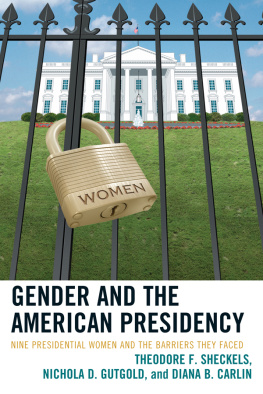

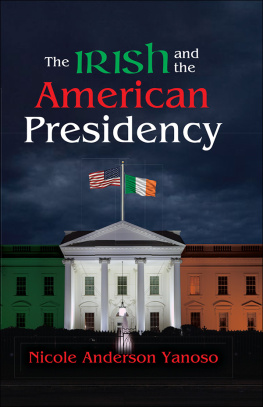
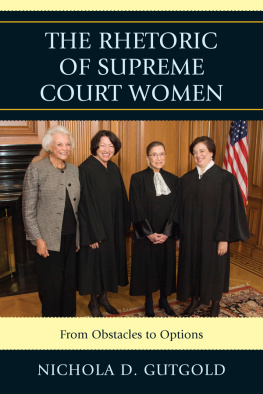
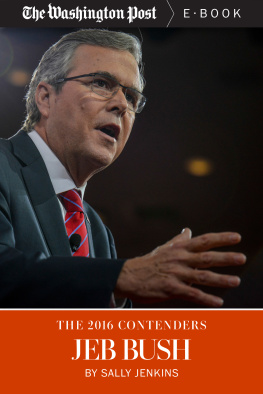
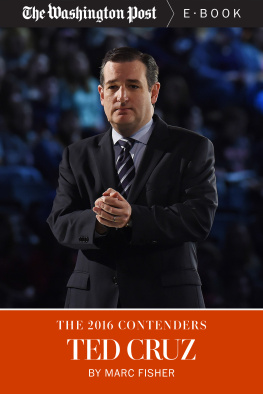

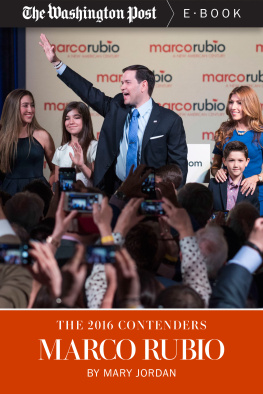
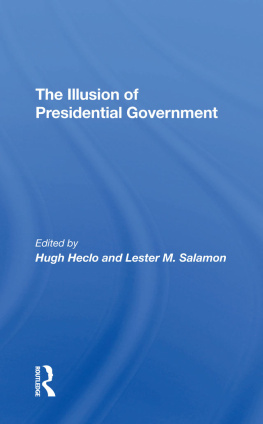

 The paper used in this publication meets the minimum requirements of American National Standard for Information SciencesPermanence of Paper for Printed Library Materials, ANSI/NISO Z39.48-1992.
The paper used in this publication meets the minimum requirements of American National Standard for Information SciencesPermanence of Paper for Printed Library Materials, ANSI/NISO Z39.48-1992.